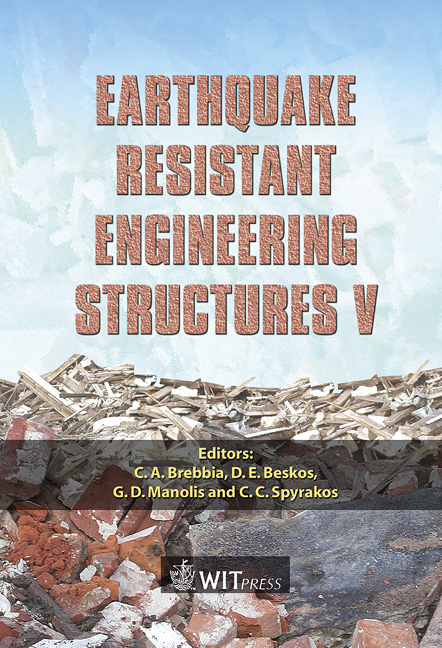Simulation Of Earthquake Ground Motion For Generation Of Artificial Accelerograms
Price
Free (open access)
Transaction
Volume
81
Pages
10
Published
2005
Size
309 kb
Paper DOI
10.2495/ERES050091
Copyright
WIT Press
Author(s)
J. A. Abdalla & Y. M. Hag-Elhassan
Abstract
The determination of strong ground motion acceleration-time history is vital for the evaluation of the dynamic response of existing structures and also for the earthquake resistant design of new structures. The determination of such strong ground motion records is usually obtained by using accelerometers to record the strong motion parameters in the event of earthquakes. The lack and scarcity of accelerometers for recording strong ground motion acceleration-time history in some seismically vulnerable mega-cities necessitates the use of simulation for artificial generation of these records. This paper simulates ground motion acceleration-time history using stochastic processes. The ground acceleration is modelled as a Gaussian stationary process and the non-stationary acceleration-time history is obtained by applying an envelope or shape function to the stationary process. The power spectral density used for this process is a function of the earthquakes’ magnitudes, epicentral distances, and sites soil condition. The generated acceleration-time history can be used to assess the vulnerability of existing buildings to earthquakes and also for the earthquake resistant design of new buildings. Keywords: artificial accelerogram, simulation of ground motion, stochastic processes. 1 Introduction Earthquakes are among the most destructive natural disasters. The life and economic loss which may result from a severe earthquake striking a densely populated area, is a direct consequence of damage and collapse of buildings. There are several densely populated mega-cities that are located in a soft deposit
Keywords
artificial accelerogram, simulation of ground motion, stochastic processes.





